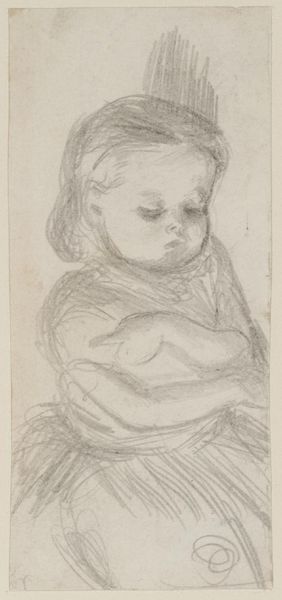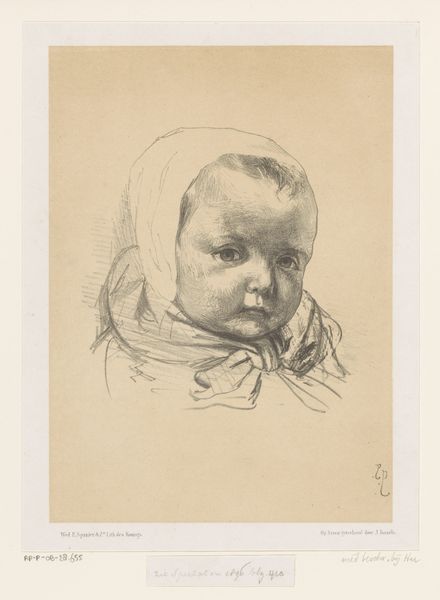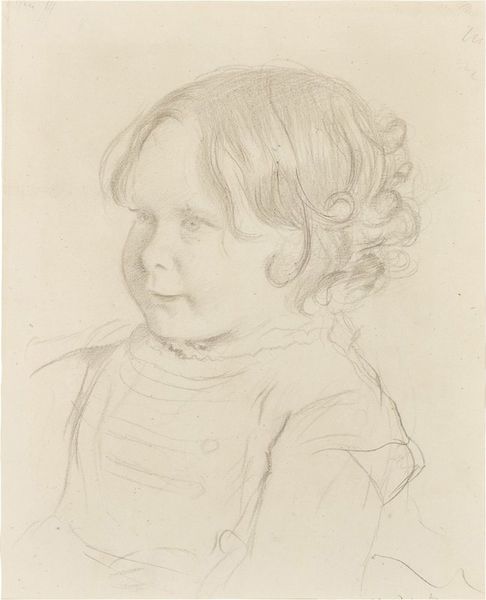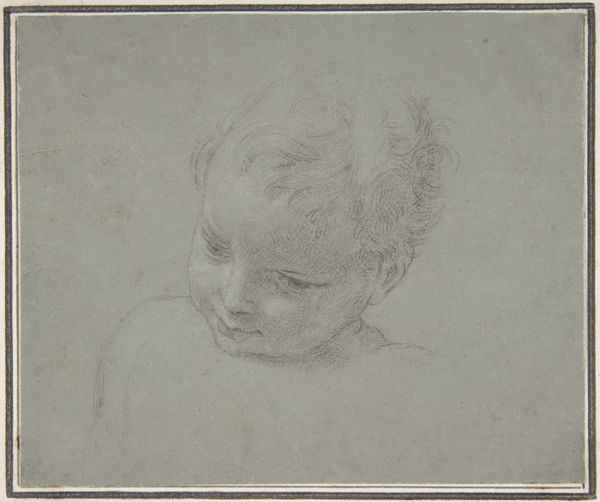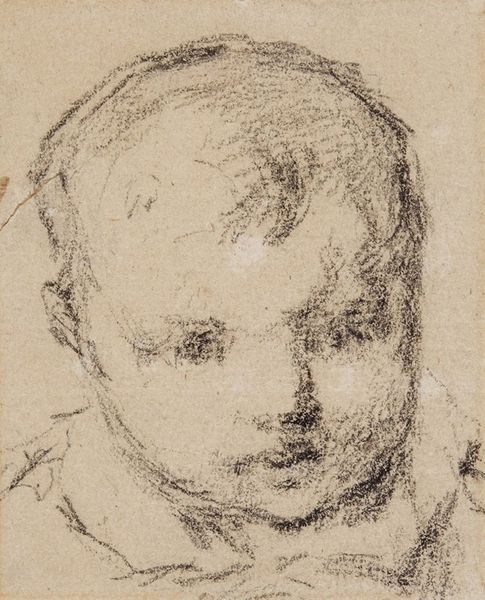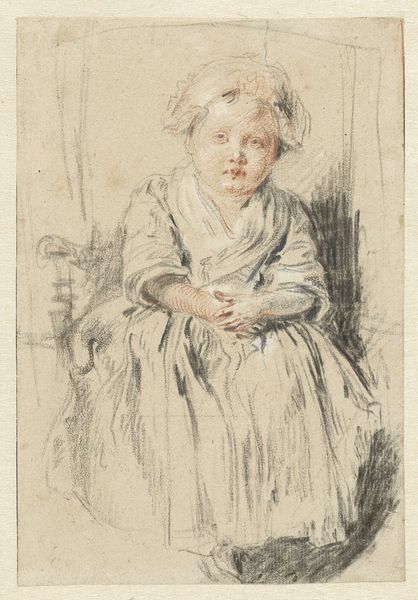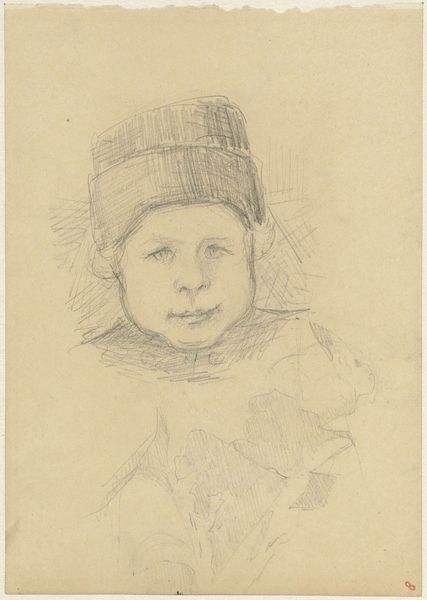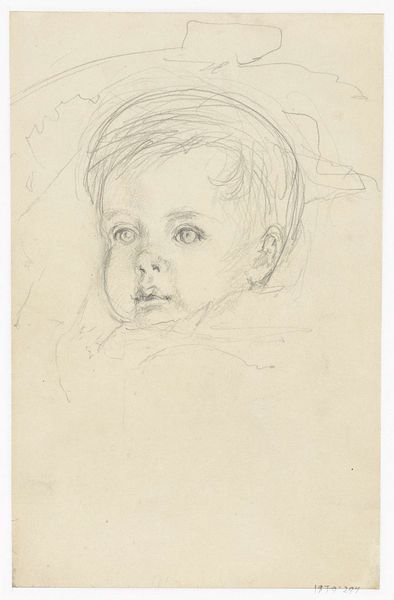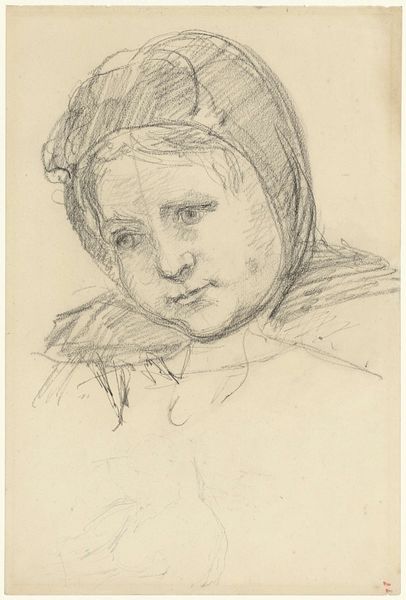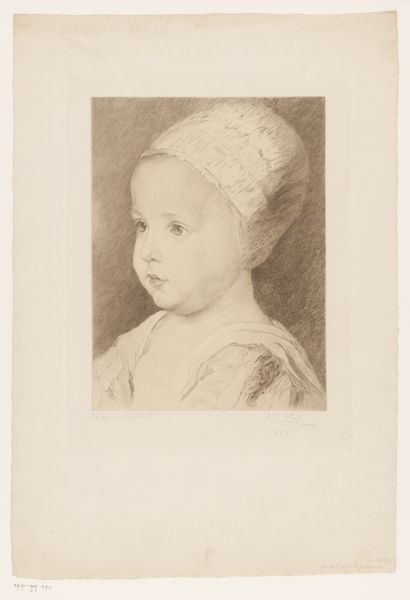
drawing, print, pencil
#
portrait
#
pencil drawn
#
drawing
# print
#
impressionism
#
pencil sketch
#
pencil drawing
#
pencil
#
portrait drawing
Copyright: National Gallery of Art: CC0 1.0
Editor: This is Theodore Roussel’s "A Baby", a pencil drawing, maybe also a print. It has this tender, intimate feel to it, almost like a glimpse. What do you see in this piece, looking at it from an activist perspective? Curator: It's crucial to see this tender portrait as more than just a charming depiction. The innocence of a child has historically been weaponized. Who gets to depict childhood, and whose children are deemed worthy of such tender representation? The art world has often excluded the diverse realities of children, particularly those from marginalized communities. Does this image challenge or reinforce those exclusionary practices, do you think? Editor: Hmmm. I hadn’t really thought about that. I was just thinking about how sweet and vulnerable it is. Curator: Vulnerability is key. Consider the power dynamics at play: the artist, likely an adult and of a certain class, capturing a child’s likeness. How might this be interpreted through a lens of exploitation, even if unintentional? How might a feminist lens examine the male gaze at work, even in this seemingly innocuous image? Editor: It’s interesting to think about art beyond the purely aesthetic. Does every artwork have to carry this kind of critical weight? Curator: Not necessarily, but every artwork exists within a cultural context. Ignoring that context is a choice, one that can perpetuate harmful power structures. It's our responsibility to ask these questions. Editor: I guess thinking about it that way adds layers. I see the sweetness but now I also think about who this baby represents, and who is left out. Curator: Exactly. We’re not dismissing the artistic skill, but situating the work within larger social dialogues and representation, equity, and historical exclusion.
Comments
No comments
Be the first to comment and join the conversation on the ultimate creative platform.
